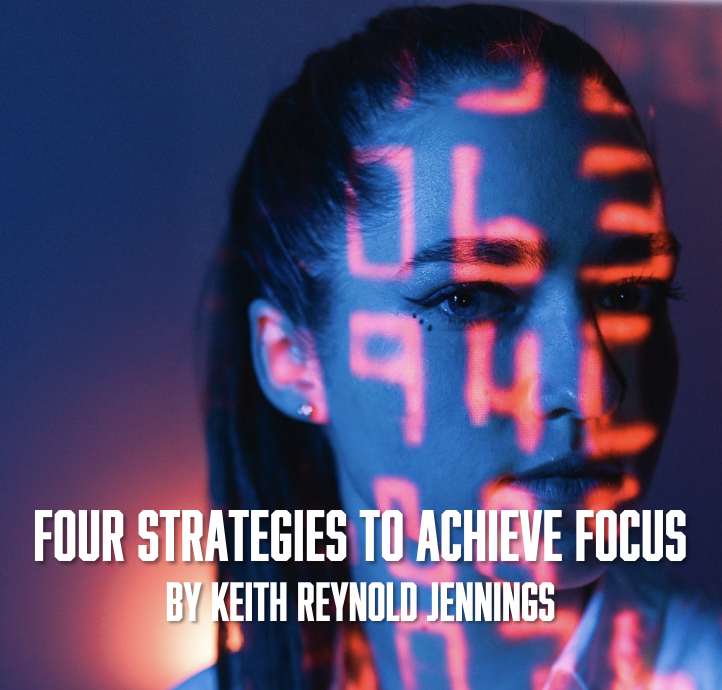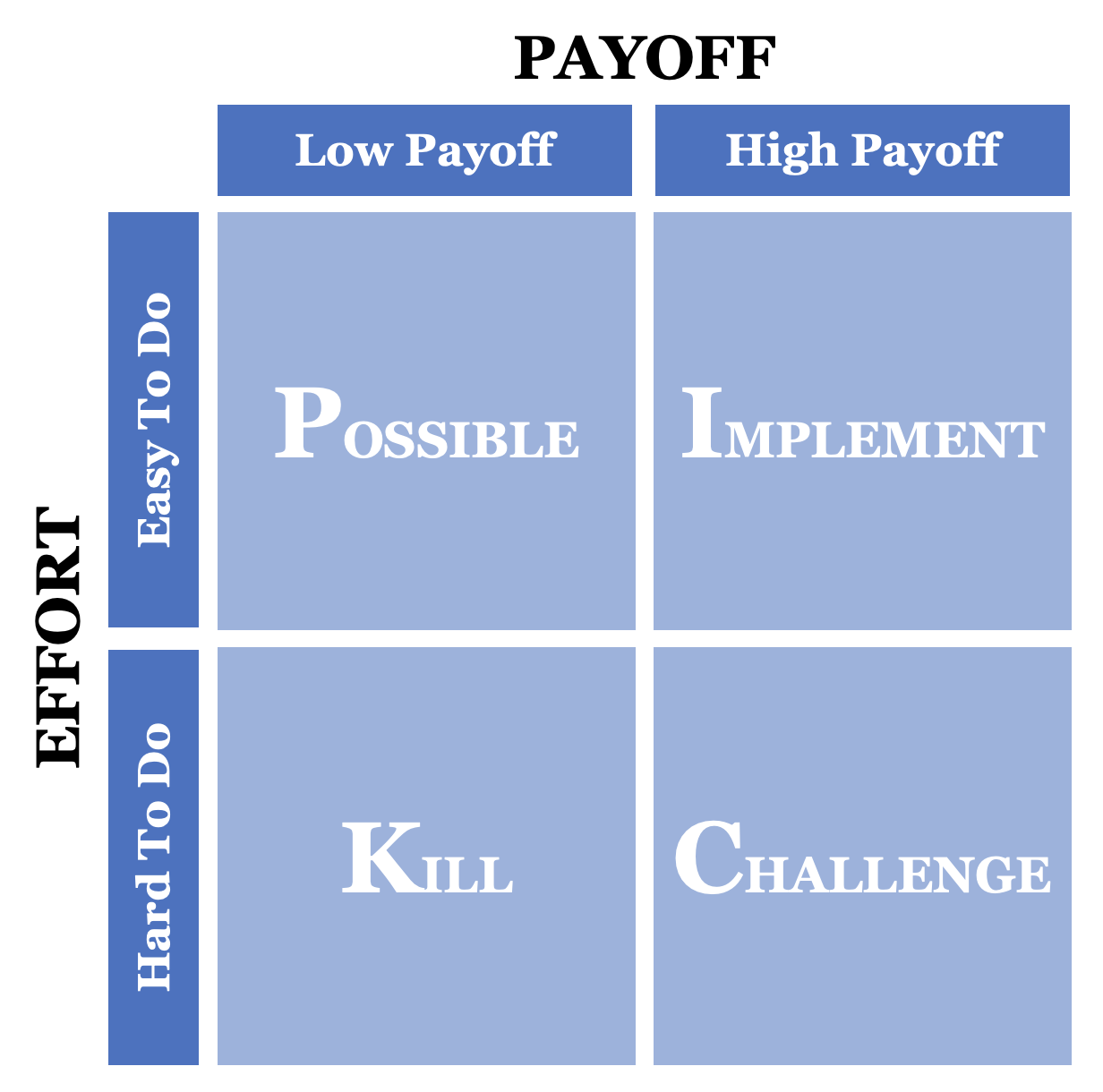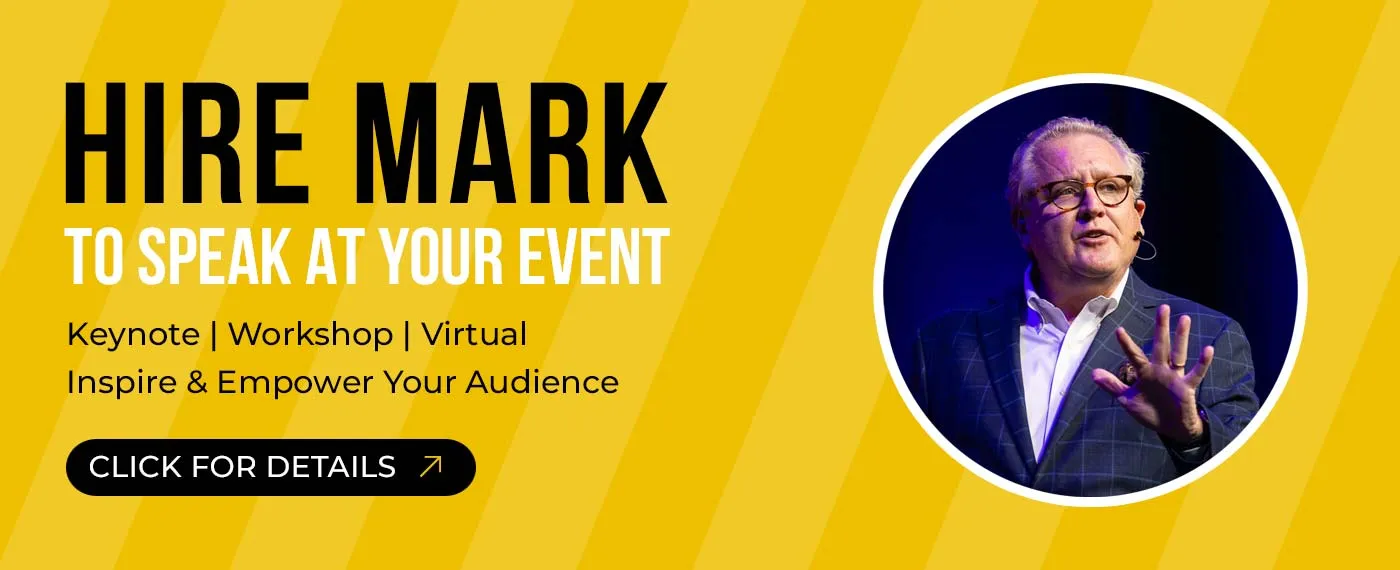
Achieve focus
By Keith Reynold Jennings, {grow} Contributing Columnist
In reflecting on his recent sabbatical, Mark Schaefer wrote, “I had no idea how much stress it was being nice…but I think I have to say ‘no’ more at this time in my life.”
Well, Mark’s little aside contains an important truth: FOCUS DRIVES IMPACT.
The need to achieve focus
I celebrated my fiftieth birthday earlier this year. Given the year we had, the year we’re entering, and that unique age milestone, this convergence of “markers” forced me to reflect on where I’ve come from, where I am, and where I’m heading with my life and career.
It’s forced me to reevaluate my priorities and recommit to the one discipline that will help me contribute to something bigger than and beyond myself. That discipline is the cumulative power of focus.
But here’s the thing. Creative people create. Demand creates more demand. Even seasonal droughts increase our activity and investments. In other words, ambitious professionals are driven to produce, so we tend to let work expand to fill any and all time we have. It’s Parkinson’s Law.
We need a system that helps us figure out which 20 percent of our effort will generate 80 percent of our impact and results. So, as Mark alluded to, we need a system for knowing when to say yes and, more importantly, when to say no.
In this article, I share four strategies I use to help achieve focus, protect innovation, and attract support. Each of these could be articles in and of themselves! But I think it’s important for you to see how these work together to create flywheel-like momentum at a macro level.
I encourage you to share these tools with your team, especially your younger associates and those you mentor. And discuss where you should invest your focus in 2021.
1. Define Your Circle of Competence
Ted Williams is considered to be one of the greatest hitters to ever play the game of baseball. He had a lifetime batting average of .344 (really good!). His lifetime on-base percentage of .482 is the highest of all time.
 In his book, The Science of Hitting, Williams described how he divided the strike zone into 77 individual baseballs made up of seven balls wide by eleven balls high (see image). Each ball represented his batting average for a pitch in that position. He called the area where his hit percentage was highest his “happy zone.” Williams essentially waited for a pitcher to throw a ball in that area before he would swing.
In his book, The Science of Hitting, Williams described how he divided the strike zone into 77 individual baseballs made up of seven balls wide by eleven balls high (see image). Each ball represented his batting average for a pitch in that position. He called the area where his hit percentage was highest his “happy zone.” Williams essentially waited for a pitcher to throw a ball in that area before he would swing.
This focused, scientific approach to hitting caught the attention of a baseball fan named Warren Buffett.
Buffett says he has one advantage over Williams. Williams eventually had to swing at something so he wouldn’t strike out, Buffett can watch investment opportunity after opportunity go by until he finds the perfect one. Then he “swings big” by making a large investment.
To guide his investments, Buffett has developed what he calls his “circle of competence.” Like the Williams “happy zone,” he only invests in certain types of companies where he clearly understands their economic engine, and that gives him the highest return on his investment.
To achieve focus, choose to compete where you have the highest probability of winning.
- What is your circle of competence?
- What are the one-to-two areas where you tend to generate the greatest return for yourself, your team, your business, and your clients?
2. Achieve focus through “PICK”
Saying no to a single project is tough for leaders and creatives to do. Saying no to MOST projects is exponentially harder. It demands discipline.
Nick Saban, the coach with the most championships in NCAA football history, defines discipline as, “Doing what you should, even when you don’t want to. And not doing what you shouldn’t, even when you want to.”
One of the greatest tools I was taught for assessing the potential return of projects is the PICK Chart.
Developed at Lockheed Martin as a lean six sigma tool, the PICK Chart helps you analyze the potential return of any project against the level of effort a project will require.
Here’s how this tool guides your choices to help you achieve focus:
P (Possible) — Projects that fall in this quadrant require low effort, but offer low return. These are lower priority projects only for times you have the bandwidth. Treat projects in this quadrant as your #3 priority behind the next two.
I (Implement) — Projects in this quadrant are your #1 priority. These projects are easy to implement and offers a high return.
C (Challenge) — These projects demand high effort, but offer high return. These are your #2 priority. Best practice principles say you should only implement one C-Quadrant project at a time. So choose wisely.
K (Kill) — Projects in this quadrant require a lot of effort for very little return. The rule of thumb is to shelve all of these and focus on the other quadrants.

I’m continually surprised by how many smart leaders get sucked into trying to do everything. They swing at any and every pitch that comes their way.
- Which projects on your plate this year fall into the “Implement” or “Challenge” quadrants?
- Which do not?
- What is it time to say no to?
3. The Four Disciplines of Execution
Once you narrow your focus to those projects that offer the greatest impact, I recommend using Franklin Covey’s “Four Disciplines of Execution,” also known as the 4DX system.
Here’s how it works:
1 – Choose one wildly important goal (called a WIG). Define your WIG using this structure: “We will (verb) (metric) from x to y by (deadline).” This is your lag measure.
An example of how this might read is, “We will increase our sales pipeline from $10 million to $50 million in the next 24 months — by December 31, 2022.”
2 – Act on the key lead measures that move you from where you are now to where you need to be at your deadline. Factor in seasonality and other variables that drive your business.
Again, use the 80/20 Rule to focus on only those lead measures that generate the greatest contribution toward your WIG.
3 – Keep a scoreboard. Capture and communicate your lead measures using a scoreboard that clearly and quickly plots where you currently are versus where you should be at this moment in time. If done correctly, you should know if you are on or off track with a simple glance at your scoreboard.
4 – Develop a cadence of accountability. Commit to a time each and every week to review your scoreboard and determine what needs to be done over the next week to get or stay on track with your lead measures.
A stumbling block I’ve seen is thinking too small. Some leaders think they’re supposed to pick a single tactical metric for their WIG. But remember, if you diligently assess your projects and plot them on the PICK Chart, it should be clear which macro strategy you’re setting out to achieve. That’s likely your WIG.
- What wildly important goal should you/your team be focused on right now?
- How will you know when you have achieved it?
- What milestones will get you there?
- How will you chart and track your progress?
4. Make Room for Innovation
When you achieve focus, it also generates momentum. The downside is that it can blind us to new opportunities and breakthroughs.
I recommend using the 70-20-10 rule to overcome that. Here’s how it works:
Dedicate 70 percent of your time to sustaining innovation. This is your bread-and-butter operations — the economic engine of your business.
Invest 20 percent of your time exploring adjacencies. Whereas your 70 percent sustains the growth of your S-curve, this 20 percent explores new S-curves that can ensure your survival once your main business or area of focus begins to decline or face disruption.
Allow 10% of your time to be invested in challenging and disrupting the projects driving your 70 percent. The best way to invest in this area is to co-create and test new projects with your customers or clients.
- What core projects make up 70 percent of your week?
- What ideas have you had that you can explore and test in that remaining 30 percent of the time you have to invest?
The role of Cumulative Advantage
In his book, Cumulative Advantage: How to Build Momentum for Your Ideas, Business and Life Against All Odds, Mark Schaefer introduces readers to one of the most powerful, yet misunderstood, tools in marketing and business: the Matthew Effect.
Also known as Cumulative Advantage, the Matthew Effect is the reason why things go viral, why blockbusters and bestsellers happen, and why winners keep winning. It works like this:
- People tend to like what other people like
- Because people tend to like what others like, certain products and ideas gain early momentum (i.e. an advantage)
- This early momentum attracts more people (because people tend to like what others like) and this creates a compounding growth effect
But here’s the thing. This effect can be rocket fuel for our projects and goals too. Quick, early momentum can attract more people and resources to our efforts creating a cumulative growth effect.
In my view, Mark’s book is THE playbook for recognizing and leveraging this early momentum.
Pulling it all together
For two decades, I put all of my professional energy into mastering marketing. And in that process, I discovered that I tend to attract attention and support when I’m leading people through change, not when I’m doing day-to-day marketing operations.
In other words, my circle of competence is in encouraging and activating others through change management. When I’m operating outside of that circle, my success rate is nominal at best. When I’m inside that circle, things tend to click.
So as I turn a critical eye to my ideas and projects for each year, I make sure the ones that go on my PICK Chart involve some level of change leadership. I look at which projects offer the greatest return for the effort required. And I pick what I hope will be the big winners.
With that, I define a single wildly important goal — for example, this year it is increasing the percentage of our associates actively serving in the community over our 2020 level by a specific amount — and begin the process of acting on lead measures with a scorecard to ensure we stay on track.
And while I’m spending 70 percent of my time on that, I’ll dedicate 20 percent of my time exploring adjacent areas (like learning & development) and 10% of my time trying to disrupt the way our organization approaches corporate generosity and community impact.
If I stay focused and do my job, along with my colleagues, our organization should have measurably more satisfied, engaged associates as well as a stronger organizational culture and brand one year from now.
That’s the cumulative power you gain when you achieve focus.
Imagine how much better our products, services, and innovations would be if more leaders could achieve focus and approach their work like Ted Williams and Warren Buffett. It’s the first “P” of marketing!
 Keith Reynold Jennings serves as vice president of community impact for Jackson Healthcare. He writes and speaks at the intersection of values, impact, and identity. Connect with Keith via Linkedin and his monthly newsletter.
Keith Reynold Jennings serves as vice president of community impact for Jackson Healthcare. He writes and speaks at the intersection of values, impact, and identity. Connect with Keith via Linkedin and his monthly newsletter.
Illustration courtesy Unsplash.com




